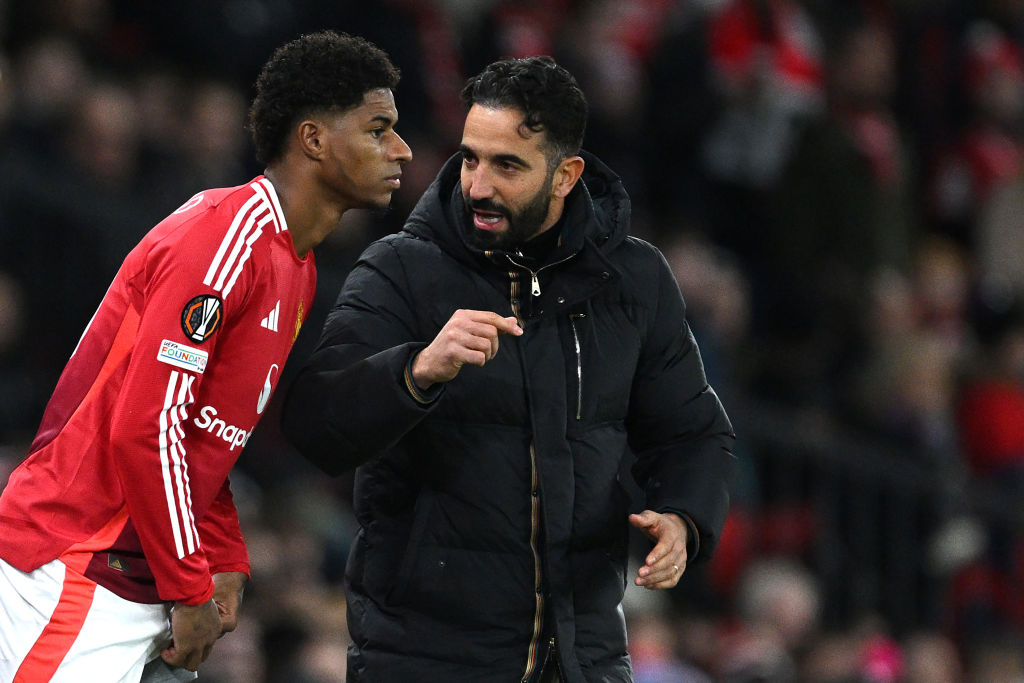FourFourTwo's 50 Biggest Derbies in the World: 30-21
The middle point in our selection of the world's fiercest matches...
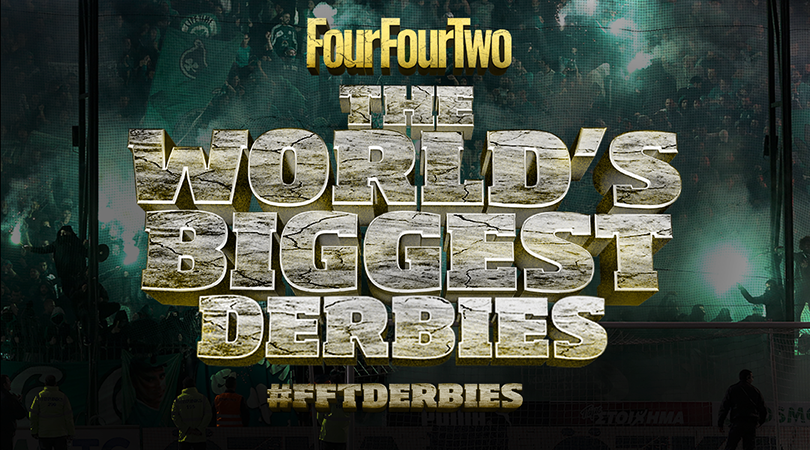
Words: Gary Parkinson and Felipe Rocha.
#FFTderbies The 50 Biggest Derbies in the World: list and features here
30. Genoa vs Sampdoria
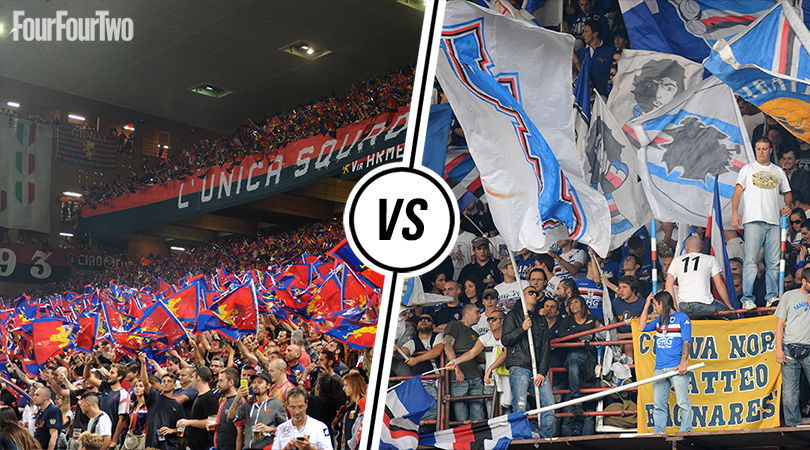
The Derby della Lanterna (Lighthouse Derby) is named after the Torre della Lanterna, the lighthouse which for almost a thousand years has protected the port city the Italians call Genova. Genoa Cricket and Football Club aren’t quite as old, although their founding in 1893 (by and for elite English ex-pats) makes them Italy’s oldest team.
By contrast Sampdoria are Italian pro football’s youngest club, formed in 1946 from the merger of the defiantly blue-collar Sampierdarenese and Andrea Doria, and immediately moving in with the neighbours at the Stadio Luigi Ferraris, which the clubs have shared ever since and which was remodelled for Italia '90. But some say the parochial enmity dates back to before Christ, citing the Second Punic War of 218-201BC in which those to the west (Samp’s heartland) sided with Carthage, while those to the east (usually Genoa-supporting) fought for Rome.
World Cup-winning coach and former Samp libero Marcello Lippi says the derby is based on “mickey-taking, pranks, like organising mock funerals for the opposition. It’s the least nasty of all the derbies.” Indeed, if a derby falls later in the calendar year it has become something of a tradition for fans of the winning team to create celebratory Christmas cards to send to their cross-city ‘cousins’. But it’s not always so inoffensive: in May 1989 and September 2007, fans fought pitched battles. GP
READ THIS: More Than A Game: Genoa vs Sampdoria
Get FourFourTwo Newsletter
The best features, fun and footballing quizzes, straight to your inbox every week.
FFT's 100 Best Stadiums: Stadio Luigi Ferraris
29. Colo-Colo vs Universidad de Chile, Chile
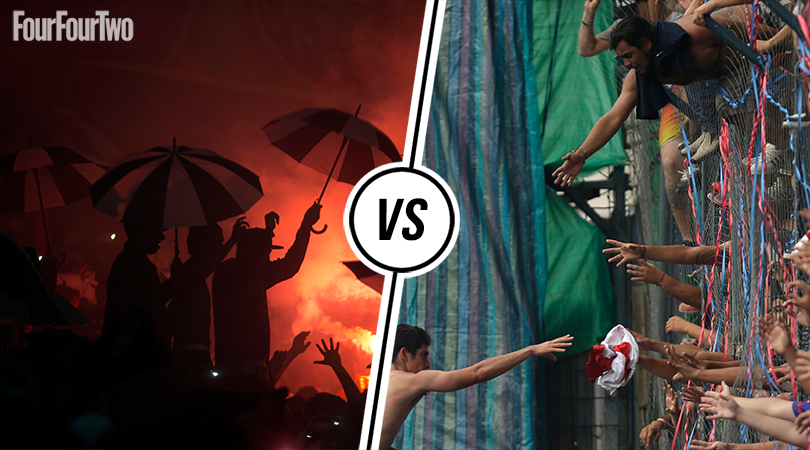
Chilean capital Santiago is home to the country’s two football giants. Universidad are known as El Chuncho – ‘the Owl’ – and, yes, started out as a university side. Colo-Colo, founded in 1925, are modestly nicknamed El Popular, or ‘the Popular One’ (inevitably soon to be a Premier League manager’s nickname). They were named after a tribal chief from the 16th-century Chilean war of independence and have links to another leader – infamous dictator Augusto Pinochet, who was honorary club president until startlingly recently; there’s a longstanding controversy over whether he donated money for the completion of Colo-Colo’s Monumental home, which Universidad fans call “Pinochet Stadium”.
Colo-Colo won the first two derbies 6-0 and 6-1 in 1938, but a change of approach from Universidad ensured things got rather more lively two years later. Jose Balbuena caught Colo-Colo’s Alfonso Domingues with a feisty challenge; Domingues responded with a punch. The Colo-Colo man was given his marching orders and his team-mates walked off in protest, leading to the game being abandoned. Boyhood Colo-Colo fan Ivan Zamorano may have played for Real Madrid against Barcelona and for Inter against Milan, but said: “Of all the derbies I’ve played, Colo-Colo vs Universidad de Chile is by far the most important.” His former international strike partner Marcelo Salas played for Universidad and scored a hat-trick against Colo-Colo in ’94, which must have made for some interesting conversations in the national team dressing room. FR
FFT's 100 Best Stadiums: Estadio Nacional Julio Martinez Pradanos
28. Benfica vs Sporting
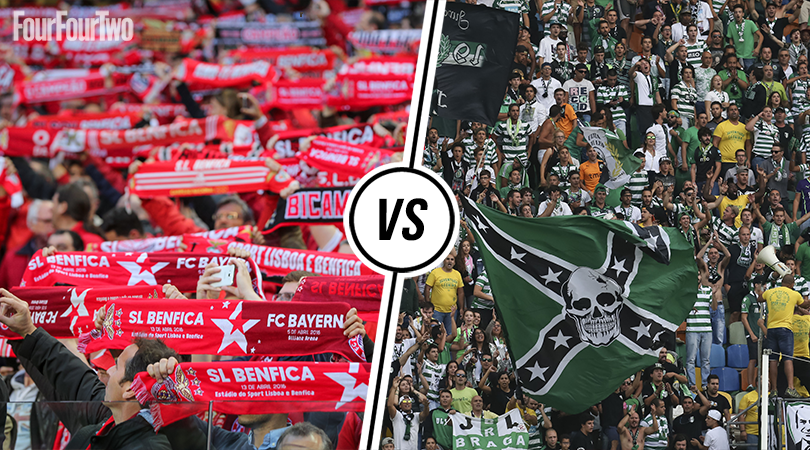
There’s only a mile between the homes of Benfica and Sporting, but there’s a gulf in class. Formed in 1904 by students, Sport Lisboa e Benfica was a hand-to-mouth operation typified five decades later by the fans clubbing together to build the Stadium of Light; Sporting Clube de Portugal, founded in 1906, was bankrolled from the start by the grandfather of their founder (Jose Alvalade, after whom the stadium is named), who happened to be a viscount.
Before the first derby in 1907 Sporting lured eight players from their rivals with the promise of better facilities, rubbing it in by sending them out for the second half in fresh kit; four years later, Sporting players refused to welcome the “scruffy” Benfica team to their stadium. Even so, the Eagles have often had the upper hand, reaching seven European Cup finals and winning two. Sporting fans claim Benfica only got their most celebrated player Eusebio because fascist police sped through the paperwork, although the man himself told FourFourTwo that was “all lies”.
Although the schism runs deep, it’s not the most vicious of rivalries; that’s perhaps typical of Portugal, whose 1974 military-led pro-democratic coup d’etat was so peaceful that it was nicknamed the Carnation Revolution. Violence is rare, although in the 1996 Portuguese Cup Final Sporting fan Rui Mendes was killed by a fire-cracker thrown by Benfica’s ultras. The game continued amid Sporting supporters’ shouts of “Murderers, murderers!”, but after the match the city’s two biggest teams were soon united in mutually respectful mourning. Hugo Inacio, who threw the firework, was given a four-year jail sentence. GP
READ THIS: More Than A Game: Benfica vs Sporting
FFT's 100 Best Stadiums: Estadio da Luz
27. Hajduk Split vs Dinamo Zagreb
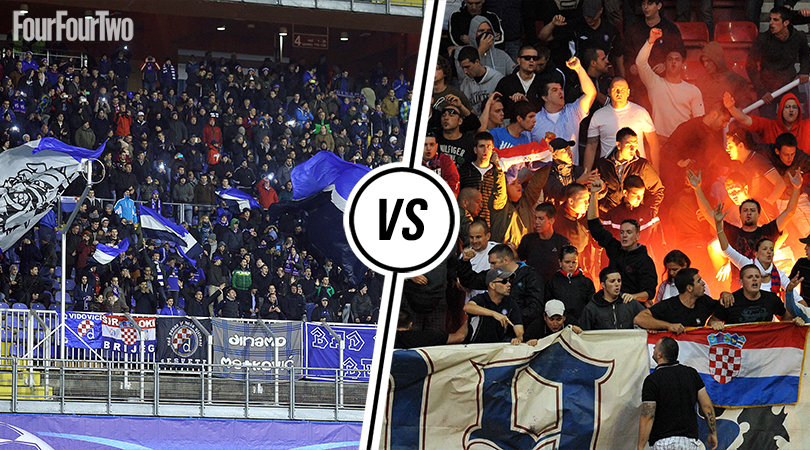
Allow FFT a small digression from the rules: Split to Zagreb is 250 miles by road and Croatia is only about 300 miles from top to bottom, so it might be argued that this isn’t a derby. The Croats disagree, calling it the Vjecni Derbi. (It means Eternal Derby. They like an Eternal Derby in the Balkans: there’s also one each in Bulgaria, Greece, Macedonia, Romania, Serbia, Slovenia and Bosnia-Herzegovina. But we digress.)
Dinamo and Hajduk are Croatia’s biggest clubs, representing very different and often fiercely oppositional cities; as is usually the way, those from the capital (Zagreb) are regarded as haughtily superior, while they in turn mock the ‘lazy provincials’. Dinamo’s on-pitch superiority has barely been questioned lately – they’ve won three of the last four league titles – but we don’t suggest you say that at Hajduk’s Poljud Stadium when Dinamo come to town. GP
READ THIS: More Than A Game: Hajduk Split vs Dinamo Zagreb
26. Raja vs Wydad
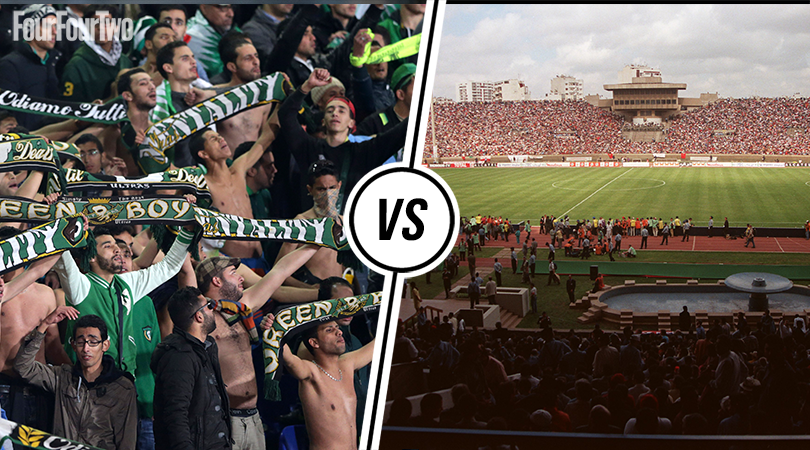
The Casablanca derby is both hyperlocal – the two clubs both occupy the 67,000-capacity Stade Mohammed V – and internationally geopolitical. Raja were founded in 1949 by nationalists aiming to rally working-class youth against the ruling French, maintaining an all-Moroccan lineup and quickly becoming regarded as The People’s Club. A decade older, Wydad were quickly cast as the elitist establishment outfit, although that tag has receded in the 60 years since the French left Morocco.
The country’s most successful teams, they have each been champions of Africa. Recent derbies have been fractious and sometimes lethal: a fan’s death in 2007 prompted a behind-closed-doors ban, but in 2010 more than a hundred were arrested after a post-game riot. GP
FFT's 100 Best Stadiums: Stade Mohammed V
25. Real Betis vs Sevilla
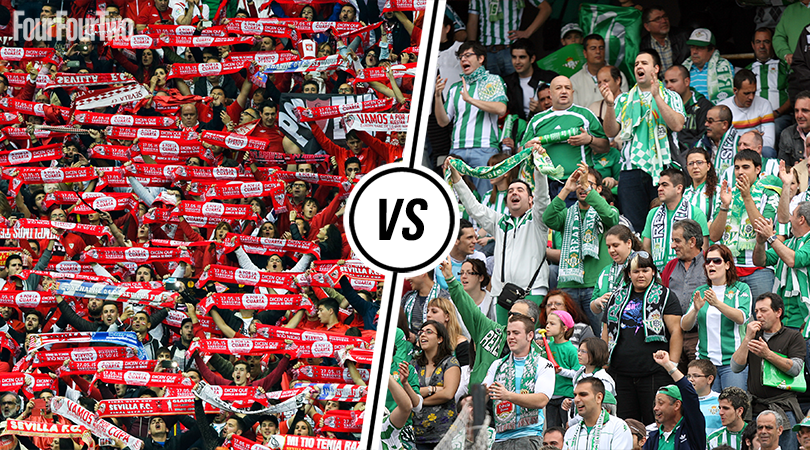
Subtropical Seville is one of Europe’s hottest cities and its rivalry can get a little heated, too. It started as a class thing. Sevilla Football Club was founded in 1905, partly by Brits working white-collar jobs for the Riotinto mining company; when one director refused to hire a worker as a player, Real Betis Balompie were formed in 1909. The first derby, in 1916, was marked by violence all over the city, and three years later there was controversy when several Betis players doing their military national service were curiously detained in their barracks during the derby; Sevilla won 22-0.
Although no longer defined and divided by the class shibboleth, the clubs remain defiantly different. Sevilla have had more success parochially (winning more derbies), domestically (six national trophies to Betis’s three) and continentally (they have been particularly impressive in recent European campaigns) while Betis have retained the rootsier support but have bobbed between the top two divisions, suffering five relegations since 1990 – but those frequent absences only make the derbi sevillano spicier. GP
READ THIS: More Than A Game: Real Betis vs Sevilla
FFT's 100 Best Stadiums: Ramon Sanchez-Pizjuan
24. Newcastle United vs Sunderland
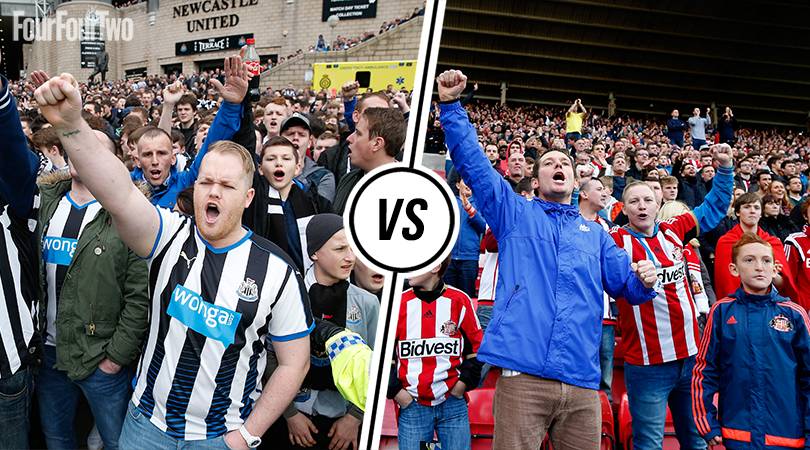
Whether locked in a battle at the bottom of the Premier League or bitterly disputing who has the better trophy haul – somewhat resembling two bald men fighting over a comb – Newcastle and Sunderland are never far from each others’ thoughts. As with the Liverpool-Manchester spat on the other side of the Pennines, it began as a commercial rivalry, but things turned deadly during the English Civil War.
Long favoured by regally granted coal export rights, Newcastle was Royalist – while overlooked Sunderland went Parliamentarian; in the inevitable battle, King Charles’ troops were defeated and Newcastle subjugated. A century later they were again riven by constitutional conflagration during the Jacobite rebellion (supported by Sunderland, resisted by Newcastle loyalists). And by 1883, they had the first derby.
The footballing rivalry has veered from the banal to the barbaric. Some fans boycott bacon (because it’s red-and-white) or Sugar Puffs (because Kevin Keegan advertised it), while others make the mutual hatred known more viscerally, and not just by the infamous 2013 punching of a police horse. In an apparently pre-arranged incident in March 2000, more than 70 fans fought with bricks, bats, bottles, pool balls, CS gas and knives, leaving one brain-damaged with a fractured skull and dozens sentenced to up to four years in prison. It wasn’t even a matchday. GP
READ THIS: More Than A Game: Newcastle vs Sunderland
FFT's 100 Best Stadiums: St James' Park
23. Corinthians vs Palmeiras
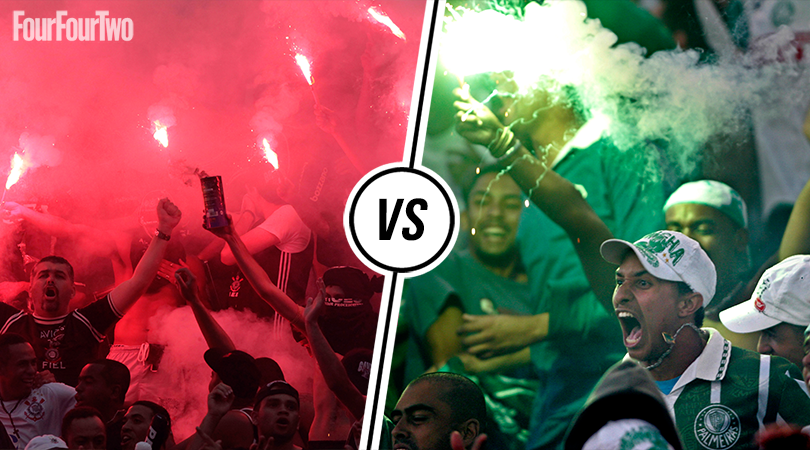
São Paulo is South America’s largest city, and the Paulista derby one of the continent’s fiercest contests. Corinthians are the self-styled people’s club: founded in 1910 by factory workers inspired by the visiting English amateurs Corinthian FC, they attracted a large working-class fanbase identifying with the club’s struggles (they took 80 years to win the national title and over 100 to get a suitable stadium).
Palmeiras were formed (as Palestra Italia) in 1914 by some Corinthians members of Italian descent, who had been inspired by the touring Torino and Pro Vercelli teams. This ‘betrayal’ still rankles a century later: during running battles before a game in April 2016, a bystander was shot dead. GP
READ THIS: More Than A Game: Corinthians vs Palmeiras
22. Partizan Belgrade vs Red Star Belgrade
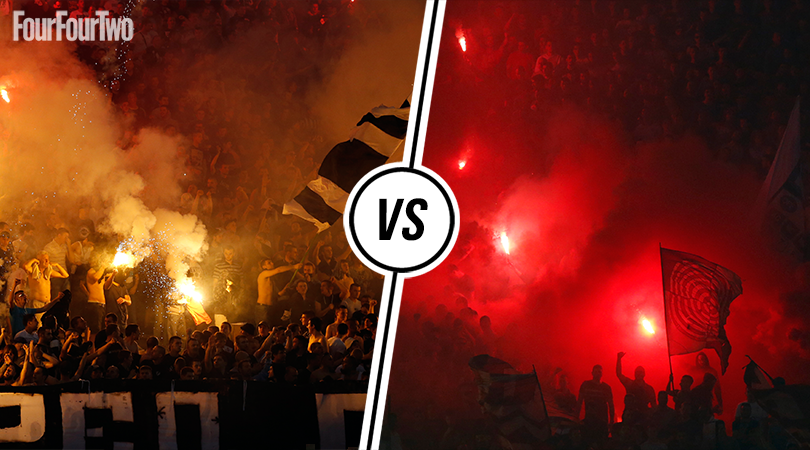
Talk about dominant. In 25 of the 26 seasons since the break-up of the former Yugoslavia, either Partizan or Crvena Zvevda (to give them their official name) have won the Serbian league. As you might expect from this complicated corner of Europe, the rivalry is older, deeper and more complex than that. The clubs were formed in the immediate postwar reconstruction of Yugoslavia: Red Star by the League of Communists, Partizan by Army officers.
As was often the way in Eastern Bloc countries, they became pawns in the power struggle between agencies of state – but even under the pervasive power of an enforcedly communal ideology, parochial squabbles and ethnic hatred would bubble to the surface. Under Communism football allowed hooligans to express nationalist fervour, and at times during the Yugoslav wars Belgrade derbies could seem like a recruiting ground for the Serbian army. But with the war over, Belgrade’s big two – separated by just 400 metres of streets and parkland – can get back to their mutual loathing. Derby day can mean hooligan violence approaching tribal warfare. If this is on your list of Games To See Before You Die, you might want to leave it till last, just in case. GP
READ THIS: More Than A Game: Partizan Belgrade vs Red Star Belgrade
FFT's 100 Best Stadiums: Marakana
21. East Bengal vs Mohun Bagan
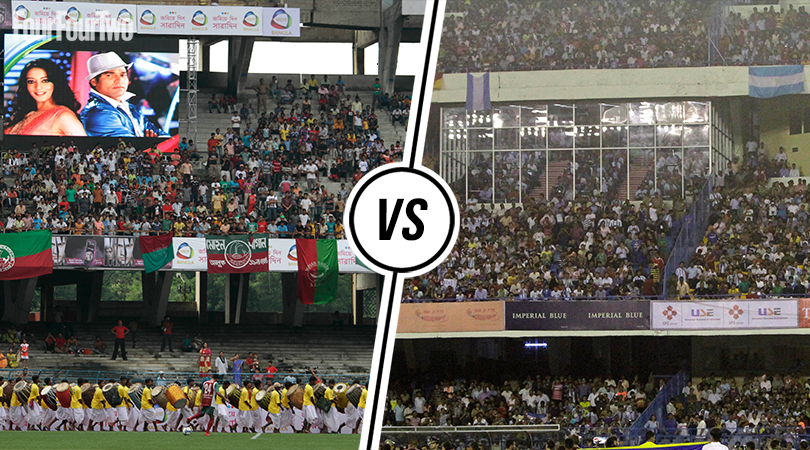
It’s big news when these two colossi of Kolkata collide. They share the 100,000-capacity Salt Lake Stadium and the derby can fill it; the record attendance, in 1997, was 131,000. And it’s all because a player didn’t get picked once. When local club Jora Bagan decided to exclude their half-back Sailesh Bose for a game in 1920, it annoyed the club’s vice-president – a rich industralist called Suresh Chandra Chaudhuri – so much that he set up a new outfit.
He and his co-founders called it East Bengal, after the nearby region they hailed from – essentially the modern-day Bangladesh. This led to something of a social schism between the clubs. The upstarts East Bengal became identified with immigrants and soon separatism, pitted against Mohun Bagan – India’s oldest club, established in 1889 when the city then called Calcutta was the capital of the British Raj. Time and independence (India’s, then Bangladesh’s) somewhat faded those geopolitical divisions, but the result never stopped mattering: after one 5-0 defeat, Mohun Bagan players avoided the fans’ fury by spending the night hiding in a boat on the Ganges. GP
READ THIS: More Than a Game: East Bengal vs Mohun Bagan
FFT's 100 Best Stadiums: Salt Lake Stadium
FFT's 50 Biggest Derbies in the World: 50-41 • 40-31 • 30-21 • 20-11 • 10 • 9 • 8 • 7 • 6 • 5 • 4 • 3 • 2 • 1
#FFTderbies The 50 Biggest Derbies in the World: list and features here
